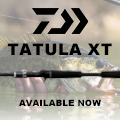Southern Resident killer whales travel the West Coast, preying on both hatchery and wild salmon returning to rivers. Additional hatchery production will supplement that salmon prey both in Washington and along the Columbia River. Photo: Northwest Fisheries Science Center/NOAA Fisheries, under permit 16163.
Federal, state, and tribal salmon hatcheries in Washington and Oregon have increased production of juvenile Chinook salmon over the last 2 years. This unusual step in the world of species recovery will promote the recovery of one of their predators, the endangered Southern Resident killer whales.
Federal funding for the project came in association with the Pacific Salmon Treaty, while state funding is through the Washington State Legislature. Hatcheries aim to increase prey for the top marine predators by roughly 4–5 percent as the young fish mature over the next 2 to 3 years.
The hatchery releases add to other recovery efforts for the Southern Residents. Federal funding included $10.4 million last year and this year to restore habitat throughout the Salish Sea. This will help improve the long-term natural production of Chinook salmon to benefit the killer whales and support fisheries in Canada and the United States.
The Treaty-related funding adds to other habitat restoration funds from the Pacific Coastal Salmon Recovery Fund, state programs, and other sources. Together these sources have directed more than $200 million to restore salmon on the West Coast over the last 3 years.
Full story: https://www.fisheries.noaa.gov/feature- ... ler-whales
Copyright © 2013-2024 WesternBass.com ®




































 Advertising
Advertising